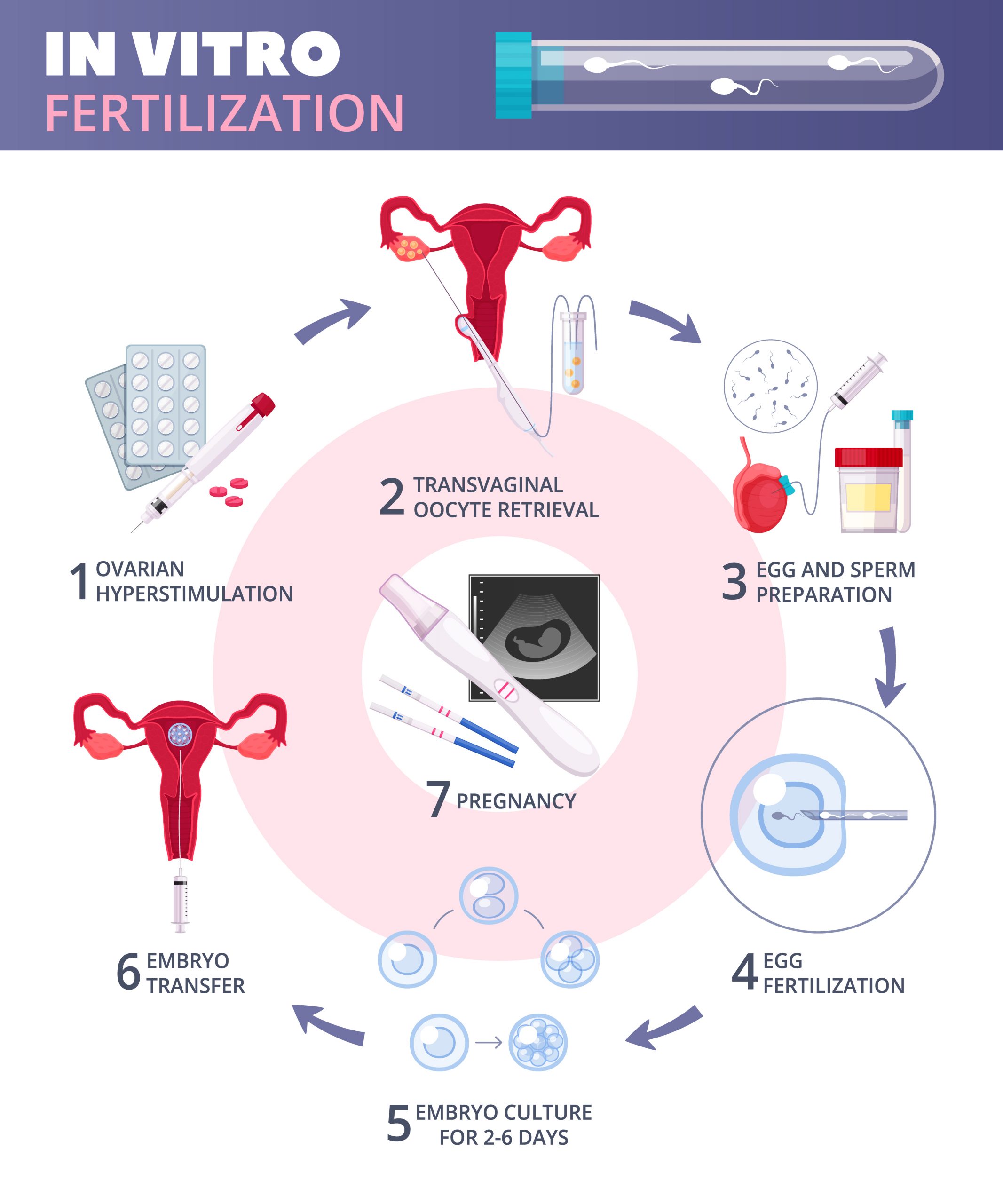In-Vitro Fertilization (IVF) Procedure
In vitro fertilization (IVF) is a complex group of treatments used to aid in the conception of an embryo, assist with pregnancy, or avoid genetic problems. IVF includes retrieving mature eggs from the ovaries and fertilizing them in a laboratory with semen. The fertilized egg (embryo) are then implanted in the uterus. It takes three weeks to complete an IVF loop. The method will take longer if these steps are broken down into separate pieces. The most successful method of assisted reproductive technology is In Vitro Fertilisation (IVF). You will use your eggs and your partner’s sperm for the procedure.. Eggs, sperm, or embryos from an anonymous donor may be used in IVF if it is required. A gestational carrier — a woman who has an embryo inserted in her uterus — can be used in some instances.

Infertility causes:
- Poor sperm count or motility.
- Nil sperm count(Azoospermia)
- Erectile Dysfunction in males.
- Ovulatory dysfunction.
- Premature ovarian failure.
- Polycystic Ovaries.
- Blocked fallopian tubes
- Antibodies that damage sperm or eggs
- Sperm unable to enter or live in cervical mucus.
Doctor
IVF success rates are determined by a range of factors, including the cause of infertility and age of the female partner.. The Centers for Disease Control and Prevention (CDC) compiles national data on all assisted reproductive technology (ART) procedures conducted in the United States, including IVF, GIFT, and ZIFT, though IVF is by far the most prevalent, accounting for 99 percent of all procedures. Fertility is a condition that can be treated with lifestyle modifications, nutritional changes, and medicine, according to a doctor. If dietary modifications recommended by Dr. Ramya Best Gynecologist in Greater Noida of Global IVF Clinic are unsuccessful, and ovarian drilling, a surgical operation, will be the last resort for women who have done anything else and are still unable to conceive.
